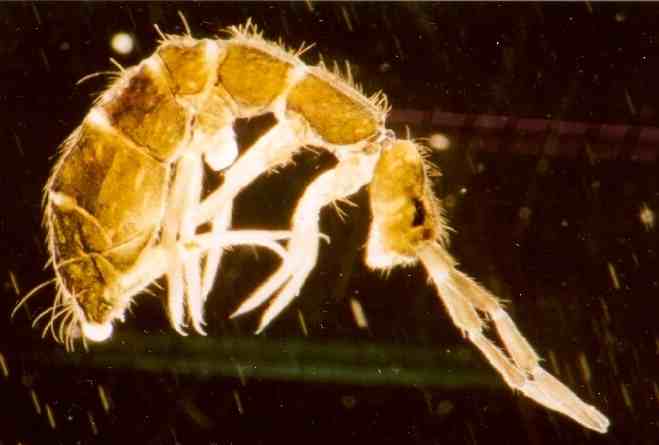|
Paravietnura
''Paravietnura'', is a genus of springtails belonging to the family Neanuridae. The genus contains 2 species restricted to Russia Russia, or the Russian Federation, is a country spanning Eastern Europe and North Asia. It is the list of countries and dependencies by area, largest country in the world, and extends across Time in Russia, eleven time zones, sharing Borders .... Body with blue pigmented. Body tubercles well developed. Two pigmented eyes found on each side of head. Mouth parts reduced. Species * '' Paravietnura insolita'' Smolis & Kuznetsova, 2018 * '' Paravietnura notabilis'' Smolis & Kuznetsova, 2018 References Arthropod genera Neanuridae {{Collembola-stub ... [...More Info...] [...Related Items...] OR: [Wikipedia] [Google] [Baidu] |
Paravietnura Notabilis
''Paravietnura notabilis'' is a species of springtail belonging to the family Neanuridae The family Neanuridae contains pudgy short-legged springtails of the order Poduromorpha. It was established by Carl Börner in 1901. Systematics There are six subfamilies currently recognized: * Caputanurininae * Frieseinae * Morulinina .... Body length without antennae is 0.85 mm. Body with blue pigmented. Body tubercles well developed. Two pigmented 2+2 black eyes found on each side of head. Mouth parts reduced. Body stumpy and relatively short. Ordinary chaetae possess four types - long macrochaetae, short macrochaetae, very short macrochaetae and mesochaetae. References Neanuridae {{Collembola-stub ... [...More Info...] [...Related Items...] OR: [Wikipedia] [Google] [Baidu] |
Paravietnura Insolita
''Paravietnura insolita'' is a species of springtail belonging to the family Neanuridae The family Neanuridae contains pudgy short-legged springtails of the order Poduromorpha. It was established by Carl Börner in 1901. Systematics There are six subfamilies currently recognized: * Caputanurininae * Frieseinae * Morulinina .... Body length without antennae is 1.10-1.35 mm. Body with blue pigmented. Body tubercles well developed. Two pigmented 2+2 black eyes found on each side of head. Mouth parts reduced. Body short and squarish. Ordinary chaetae possess four types - long macrochaetae, short macrochaetae, very short macrochaetae and mesochaetae. References Neanuridae {{Collembola-stub ... [...More Info...] [...Related Items...] OR: [Wikipedia] [Google] [Baidu] |
Neanuridae
The family Neanuridae contains pudgy short-legged springtails of the order Poduromorpha. It was established by Carl Börner in 1901. Systematics There are six subfamilies currently recognized: * Caputanurininae * Frieseinae * Morulininae * Neanurinae * Pseudachorutinae * Uchidanurinae The peculiar genus '' Pseudoxenylla'' is of uncertain relationships and hence not assigned to a subfamily yet. Genera These 97 genera belong to the family Neanuridae: * '' Adbiloba'' Stach, 1951 * '' Aethiopella'' Handschin, 1942 * '' Aethiopellina'' Delamare, 1951 * '' Albanura'' Deharveng, 1982 * '' Americanura'' Cassagnau, 1983 * '' Anurida'' Laboulbene, 1865 * '' Anuridella'' Willem, 1906 * '' Arlesia'' Handschin, 1942 * '' Australonura'' * '' Balkanura'' Cassagnau, 1978 * '' Bilobella'' Caroli, 1912 * '' Blasconura'' Cassagnau, 1983 * '' Blasconurella'' * '' Caledonimeria'' Delamare-Deboutteville & Massoud, 1962 * '' Caledonura'' Deharveng, 1988 * '' Cansilianura'' Dallai & Fanc ... [...More Info...] [...Related Items...] OR: [Wikipedia] [Google] [Baidu] |
Springtail
Springtails (class Collembola) form the largest of the three lineages of modern Hexapoda, hexapods that are no longer considered insects. Although the three lineages are sometimes grouped together in a class called Entognatha because they have internal Arthropod mouthparts, mouthparts, they do not appear to be any more closely related to one another than they are to insects, which have external mouthparts. Springtails are omnivorous, free-living organisms that prefer moist conditions. They do not directly engage in the decomposition of organic matter, but contribute to it indirectly through the fragmentation of organic matter and the control of soil microbial communities. The word ''Collembola'' is from Ancient Greek 'glue' and 'peg'; this name was given due to the existence of the collophore, which was previously thought to stick to surfaces to stabilize the creature. Early DNA sequence studies suggested that Collembola represent a separate Lineage (evolution), evolutionary ... [...More Info...] [...Related Items...] OR: [Wikipedia] [Google] [Baidu] |
Russia
Russia, or the Russian Federation, is a country spanning Eastern Europe and North Asia. It is the list of countries and dependencies by area, largest country in the world, and extends across Time in Russia, eleven time zones, sharing Borders of Russia, land borders with fourteen countries. Russia is the List of European countries by population, most populous country in Europe and the List of countries and dependencies by population, ninth-most populous country in the world. It is a Urbanization by sovereign state, highly urbanised country, with sixteen of its urban areas having more than 1 million inhabitants. Moscow, the List of metropolitan areas in Europe, most populous metropolitan area in Europe, is the capital and List of cities and towns in Russia by population, largest city of Russia, while Saint Petersburg is its second-largest city and Society and culture in Saint Petersburg, cultural centre. Human settlement on the territory of modern Russia dates back to the ... [...More Info...] [...Related Items...] OR: [Wikipedia] [Google] [Baidu] |
Arthropod Genera
Arthropods ( ) are invertebrates in the phylum Arthropoda. They possess an exoskeleton with a cuticle made of chitin, often mineralised with calcium carbonate, a body with differentiated ( metameric) segments, and paired jointed appendages. In order to keep growing, they must go through stages of moulting, a process by which they shed their exoskeleton to reveal a new one. They form an extremely diverse group of up to ten million species. Haemolymph is the analogue of blood for most arthropods. An arthropod has an open circulatory system, with a body cavity called a haemocoel through which haemolymph circulates to the interior organs. Like their exteriors, the internal organs of arthropods are generally built of repeated segments. They have ladder-like nervous systems, with paired ventral nerve cords running through all segments and forming paired ganglia in each segment. Their heads are formed by fusion of varying numbers of segments, and their brains are formed by fusion ... [...More Info...] [...Related Items...] OR: [Wikipedia] [Google] [Baidu] |


